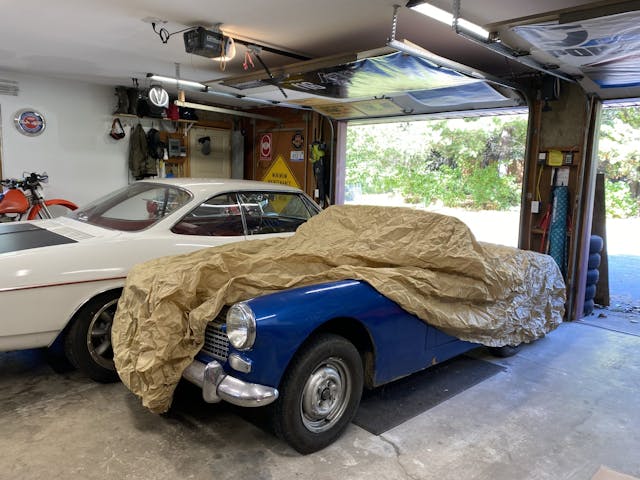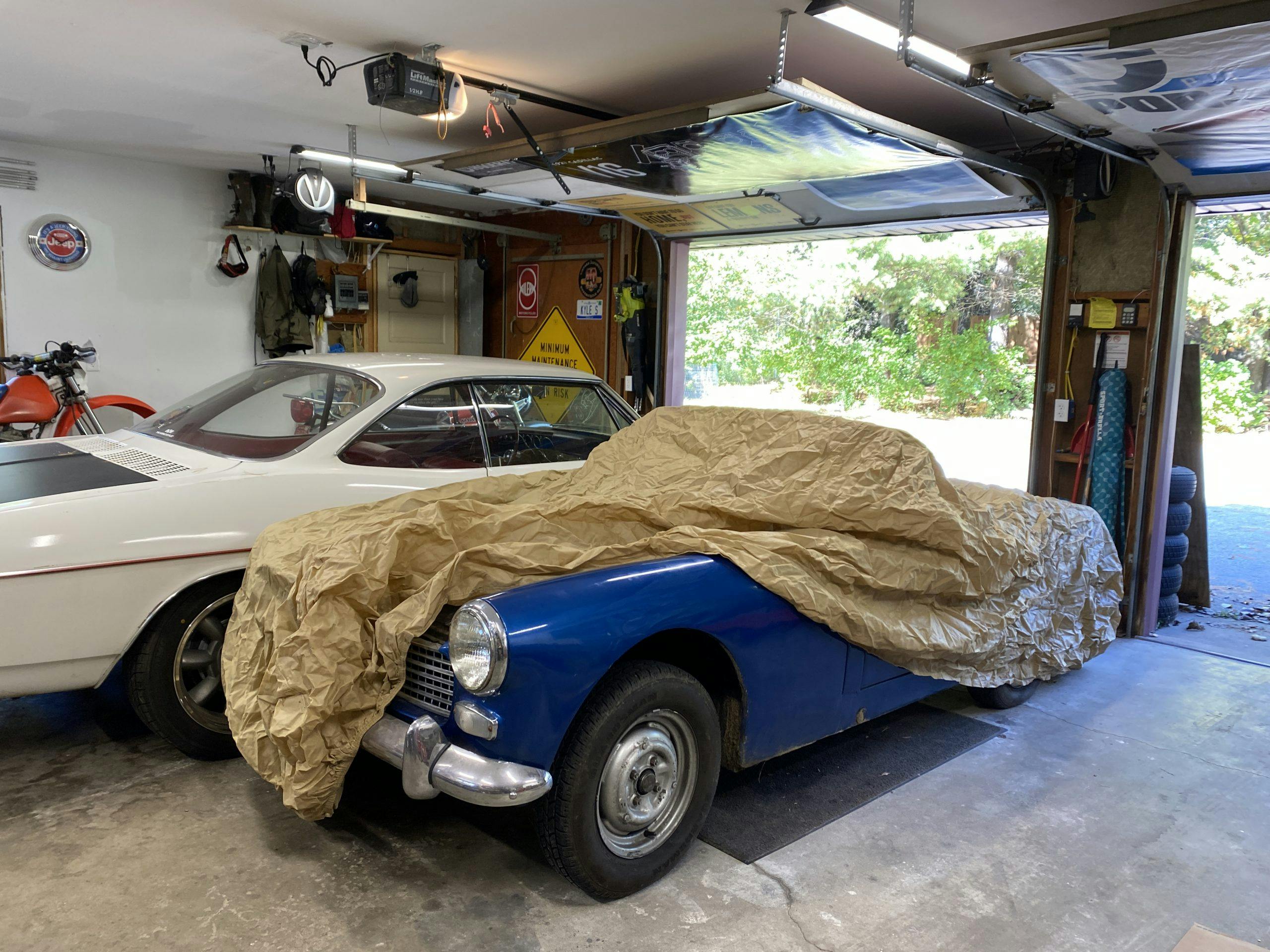Media | Articles
4 Things Silently Killing Your Vintage Car
You click the ignition key one detent to the right. A quick twitch of the right foot to tickle the accelerator pump and set the choke. Another touch on the key and . . .
Nothing.
What should be a crescendo of eight trumpets playing the V-8 version of taps and stirring the car person’s soul awake is instead the painful silence punctuated by the soft click of the ignition cylinder returning to the off position. Wake up, it’s just a nightmare.
At least, for now it is. It could happen to you, though. Nature is a cruel mistress who is conspiring against us and our cars and doing so both vigorously and silently. Here are four main offenders to keep your eye on, since your ears aren’t going to help.
The Garage Fridge

Current moving around inside an electric motor—like the compressor of a refrigerator—produces ozone, and that combined with sunlight can age tires and other rubber parts very rapidly. Replacing dry-rotted but otherwise fine parts gets expensive and annoying very quickly. If you are like me and aren’t ready to give up the fridge or freezer, focus on keeping sunlight away from your vintage ride.
Marketplace
Buy and sell classics with confidence
Corrosion

Deep inside your car, there is a war being waged between materials and nature. Hate to break it to you, but nature always wins. That means rust and other types of corrosion are leaching into the metals and connections that not only shape your car but also make it functional and easily serviceable. For every joke about “hearing a car rust” there are five cars that rusted away before the owner even noticed.
Being Parked

Sitting is the last thing cars were designed to do. All of the silent killers, and a few of the noisy ones, attack when the car is laying dormant. These things gain ground while the car is waiting, only for us to claw back some ground with our occasional drives. Oil coatings slip off and leave dry-start conditions inside an engine that could drive an owner to doing the extra work of priming an engine just to go driving. That’s only for those who are both aware and care enough to take that action. For many, ignorance is bliss when turning the ignition key and hearing the rumble through the exhaust pipes.
Friction

Fine, I’ll concede this one is not always silent, but with or without noise, excess friction is making your vintage car smaller with every drive. I’m not even talking about the intentional friction from brake or clutch lining, but instead about the metal-to-metal contact that was never designed to be that way. Grease and oil are subject to gravity just like us, so keeping oil and grease in the right spot is a never-ending task as they silently slide and ooze past seals and gaskets. One small drop on the garage floor might not seem like a big deal but over time can mean lots of very worn-out parts that seemingly happened out of nowhere.








I have two vehicles that sit for extended periods. The first one I installed a Masterlube engine oiling system on will sit through the desert summer months and driven in the winter. I used to pull the distributor out after extended sitting and crank up oil pressure up with an old distributor shaft with a speed wrench. Then I found Masterlube, the system stores oil in a sealed tank using the engines oil pressure. The engine when running feeds the tank and the tank will keep the oil under pressure with an electric solenoid. Flip the switch to ON prior to crank and the engine gets oiled.
The second Masterlube is used to put oil pressure on the V8 OHC timing chains to keep the cam chains from slapping on cold start. The chains seldom made the noise but it bothered me. I use it on every start on the cammer. I have never heard the noise again after installing the system several years ago.
Start my “56” original Ford Victoria often and go through the gears moving forward and backwards. Same with my “49” mercury coupe . Drive them around town as often as I can all year. I am 80 ( 18 with 62 years of experience).
Only sparking motors, i.e. motors with a commutator and brushes, produce ozone. Two motors in a fridge: the compressor, which has a sealed motor, and a fan, which is a non-sparking induction motor. SO, no, the fridge is not a problem.
Good morning – new to the classic car world. Just bought my dream car, a 1989 560 SL in absolutely beautiful condition. I do notice the battery drains quickly – I have read that buying a trickle charger or maintainer is important. Any advice on whether this is a wise purchase… Thank you very much!
Have owned this car in the past, they are fantastic driving machines. If the car sits for extended periods then maintainer yes, trickle charger no. Would still have the car except wife totaled it backing out of the garage and into a tree. 😂😂😂
Zeroth Thing – RODENTS !
Can’t you find an unemployed English major to proof these things? I really doubt that you are using leeches in a medical procedure – I’m guessing you meant “leaching.” And cars don’t “lay” dormant, as any 5th grader will tell you.
I see not many live with snow.
I won’t admit what we do and don’t do.
“Bertha” has only been in the FAMILY since new.
Some of the posts have brought a smile though
1953 BTW
I have a ‘66 Chevelle SS that I have owned for 52 years. It is kept in an unheated garage with a cement floor and if I’m lucky and there is no snow I will drive it it the winter. Otherwise, I rarely start it if at all during winter. I don’t see that it deteriorates sitting there as others have said. I don’t want to start it when it is very cold out. I never have problem and it starts up fine once we have spring weather.
we have a 1965 beaumont we bought in high school in 1968 as a mechanical write off and rebuilt it with many upgrades. still drive it all summer and have over 500,000m on it.
change oil, fog engine, and battery disconncected with tender all winter with cotton cover after a full wax job
easy turn over in spring with block heater plugged in to gently heat engine first.
grand kids love it and we drive it lots and pull our 1961 boat lots
I love reading these stories about aging owners, their aging cars, and the infirmaties of both! I’m 82. I just beat bladder cancer (they “got it all”). And I too have trouble keeping my 2013 911 S and my 2020 Morgan Plus 4 on the road enough to ward off those infirmatie(mine, and the cars’). But I live in Maryland, not Vermont (where I was born), so the weather here allows for sufficient winter driving.
Kyle, All good tips on what can attack a car… BUT, you’re dead wrong on ‘fridges & freezers emitting ozone. Typical “consumer” refrigeration compressors are SEALED, and operate in a closed-circuit of ‘oil (that’s why they last so long; they’re running “submerged”!). As such, no free O3 gets put. On the other hand… brush-type motors, welders, and the like, DO produce free ozone.
I hope that crescendo of eight trumpets will be playing a V8 version of reveille, not taps next time in my flat head Ford! lol
The thread took an interesting turn to focus on aging and the car collector and generated many good comments that we will all deal with some day. I sold my 60s Chevy big blocks last year as the heavy clutches (even tho Centerforce) and manual steering became a little challenging for safe driving. I didn’t want to be the geezer whose foot slipped off the depressed clutch pedal and plow through a storefront in a strip mall parking lot. 😂😂😂
I have found that even trying to protect your vehicle with a car cover while outside in the driveway can play havoc with the paint. Windy days are your enemy. Parts of your protective cover will flap and beat in the wind and cause dulling of the paint. The weather and many other things are always trying to ruin our precious gems.
You went above and beyond on this one 🤣. The only thing coming out of the garage refrigerator that will effect the condition of your vintage car is the BEER.